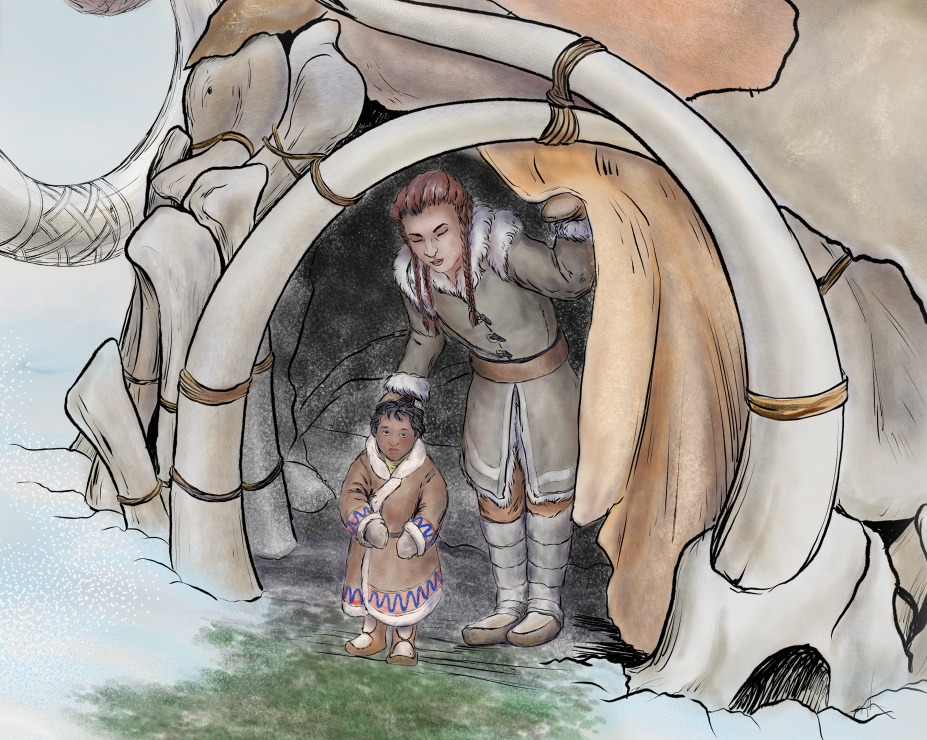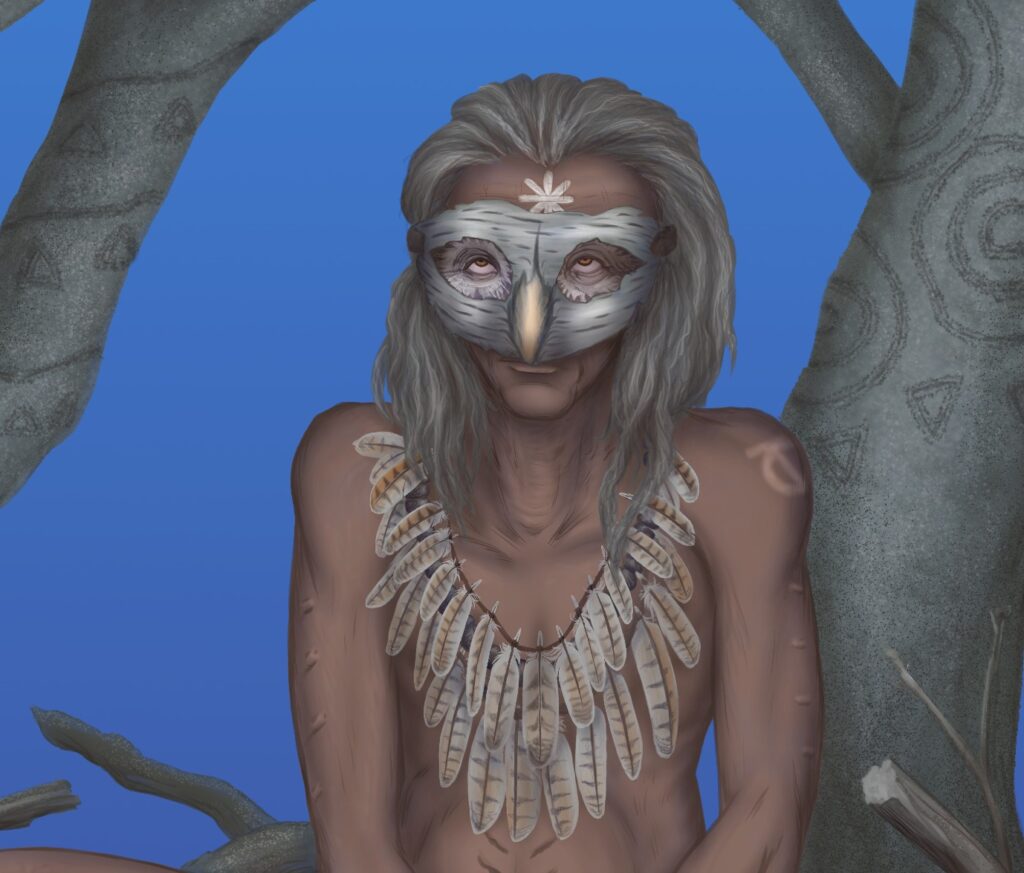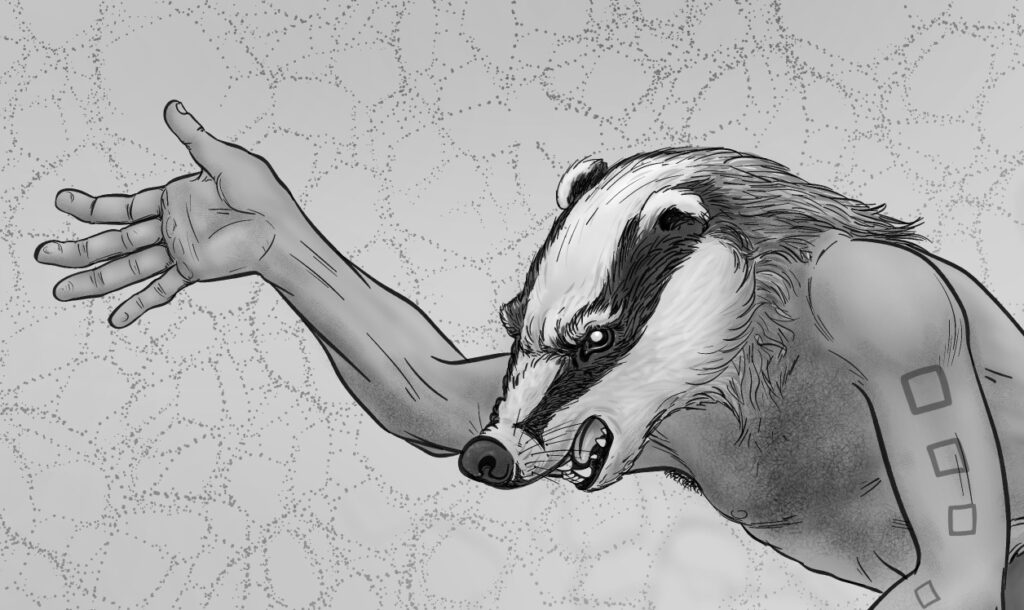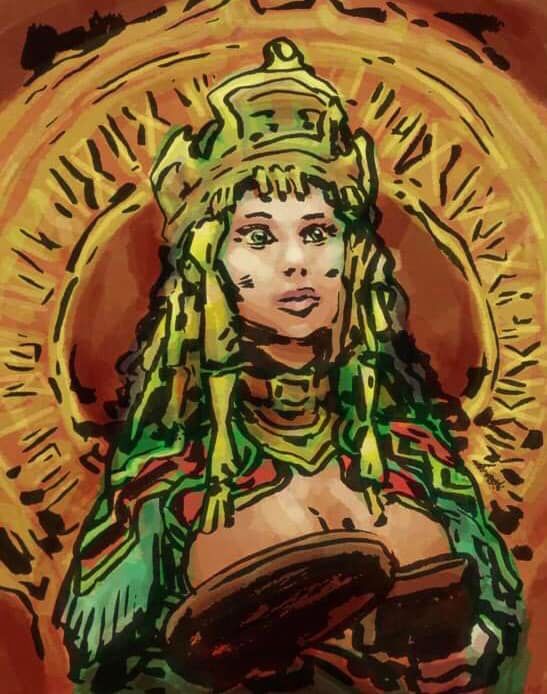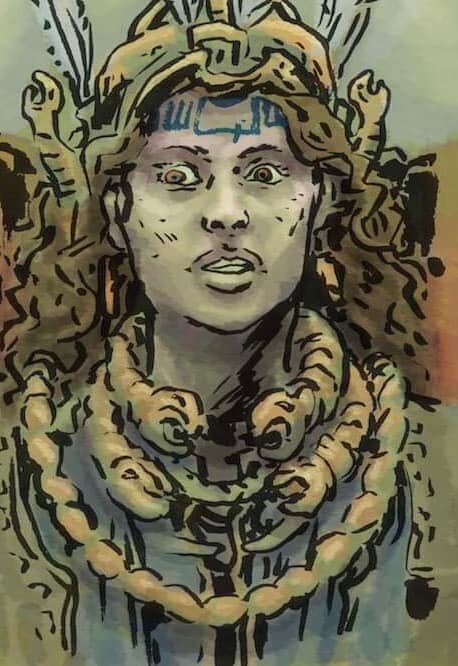Welcome to a new issue of the Journal of Runic Studies, the premier Malkioni publication for studies into the nature of Glorantha. If you haven’t subscribed yet, please consult with the spirit bound to the appropriate electronic page.
God Learner Sorcery
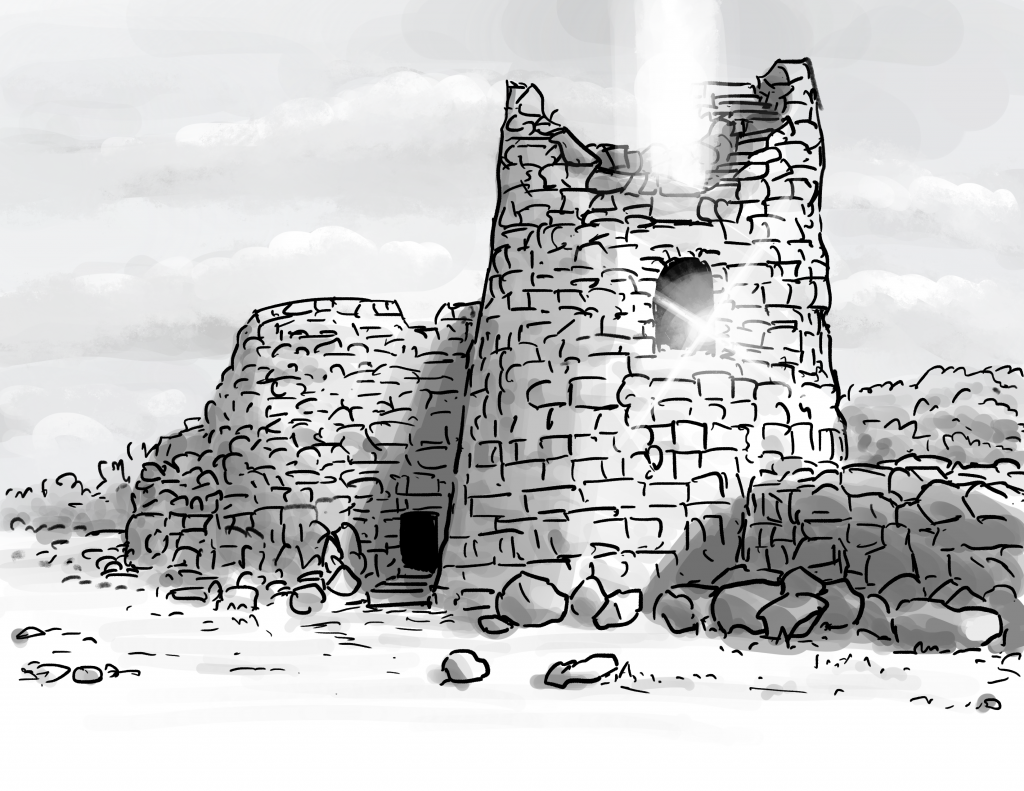
Here is what us God Learners were up to this week.
Slicing the World Banana
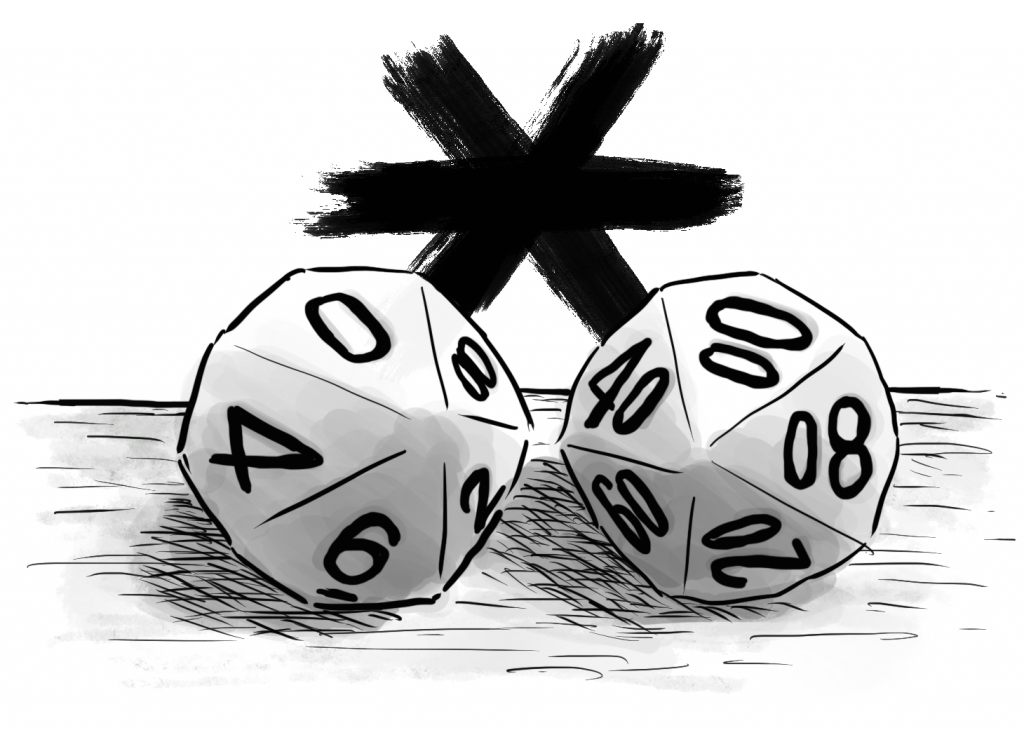
I wrote a little thing about my worldbuilding and adventure design process, after Diana Probst from Beer With Teeth wrote on the topic and invited others to share!
Chaosium News

Here are this week’s Chaosium news!
The Most Dangerous Places in Glorantha
Jeff’s choices for the most dangerous places in and around Dragon Pass are Snakepipe Hollow (of course), Dagori Inkarth (the troll stronghold north of Sartar), and… well, he gives out a couple of third choices! Namely: the Shadow Plateau and Dorastor.
Of course, people in the comments on YouTube, BRP Central, Facebook, and elsewhere have pitched in with their own favourite dangerous place, like the Upland Marsh or the Woods of the Dead. The best answer however is from Griff on Twitter: the most dangerous place is the left leg!
Jonstown Compendium

The Jonstown Compendium is Chaosium’s community content program for all Gloranthan games, hosted on DriveThruRPG. Disclaimer: all the relevant links are affiliate links that hopefully will let us cover some of the hosting and maintenance costs for the website and podcast! Thanks for using them!
Children of Hykim Status Update
It looks like Brian Duguid’s upcoming “Children of Hykim” book is almost ready to be released! In the meantime, here are some previews of Kristi Jones’ art, some of which are zoomed in from the actual piece.
The contents may change very slightly as I go through the final proofreading, but the book will describe 21 different Hsunchen peoples across roughly 80 pages*; there are about 30 pages of general material on Hsunchen society, mythology, history, spirit traditions, fighting tactics etc; 12 pages about Hsunchen characters and scenarios; and about 30 pages of appendices for those whose appetite for detail remains somehow unsatisfied.
Jeff’s Notes

Jeff Richard, the current mastermind on everything Gloranthan at Chaosium, is often posting notes and thoughts on the RuneQuest Facebook group. Here’s our curated list from the past week. A partial archive of these sources is compiled on the Well of Daliath.
More Genealogy Art Previews
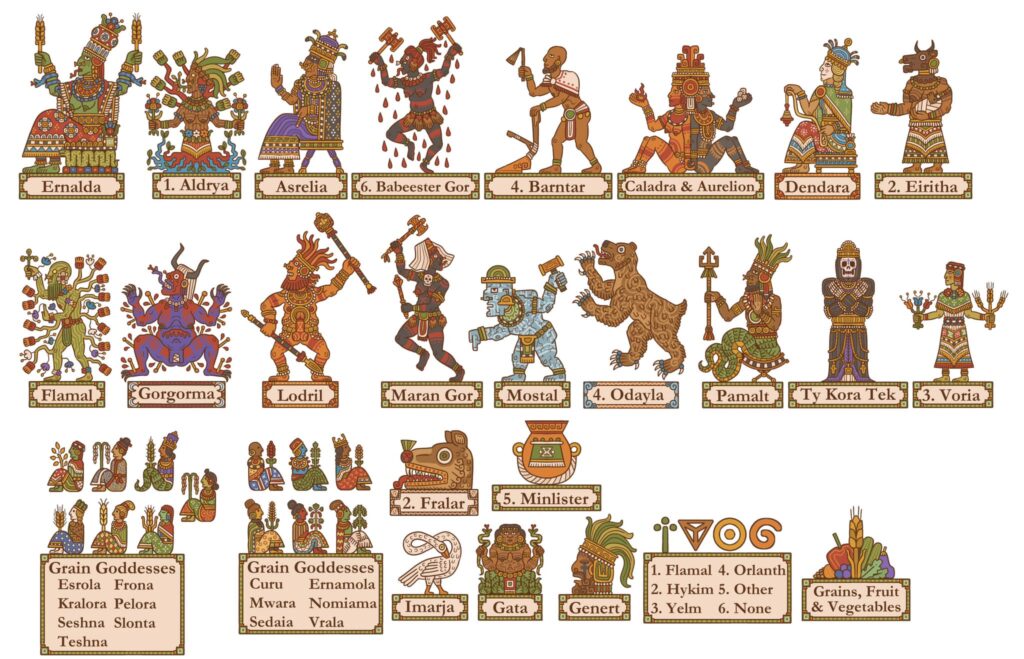
Jeff shared another preview of Katrin Dirim’s work on the pantheon genealogies! This time, it’s the, let’s say, “extended” Earth pantheon (it includes various husband protectors of Ernalda, and gods like Mostal or Odayla).
First bonus: Mastakos!

Note that just like the Darkness pantheon preview we got last week, these previews continue to evoke Aztec art styles (among others, probably). My original guess was that this was the art style of the Second Age, used by the God Learners themselves. It looks like Jeff is confirming it with the comments accompanying this preview of Yelm:

These illustrated divine genealogies were product of the New Mythic Symbolism school that first appeared in the Nochet and Boldhome Knowledge Temples around 1624.
The Mythic Symbolism school was a God Learner approach to divine iconography that was popular in Jrustela and Umathela in the 8th and 9th centuries. It was very stylied and took an almost heiroglyphic approach to divine iconography. Largely forgotten in Third Age Genertela, it was rediscovered recently in the Big Rubble by adventurers who made rubbings of a stele found in the ruins of Robcradle. Copies of those rubbings were circulated among various Knowledge Temples, and the style has become popular because of its comparative simplicity and ease.
An influential Grey Lord in Boldhome drew these particular images in 1625, part of series which she claims depicts the relationship and kinship of all the major deities, and was accompanied by a poem describing the origins and genealogies of the gods, called simply Catalogue of the Gods. This text proved influential in the Hero Wars and several heroquesters claimed it as an inspiration.
We found some more information here in our tower: “This catalogue of gods became so popular that a band of Issaries heroquesters started mass-producing it and leaving a new version every season on the doorstep of people in the cities. It was known as the Seers Catalogue”.
Aaaaannnyyway. Here’s more about Yelm:
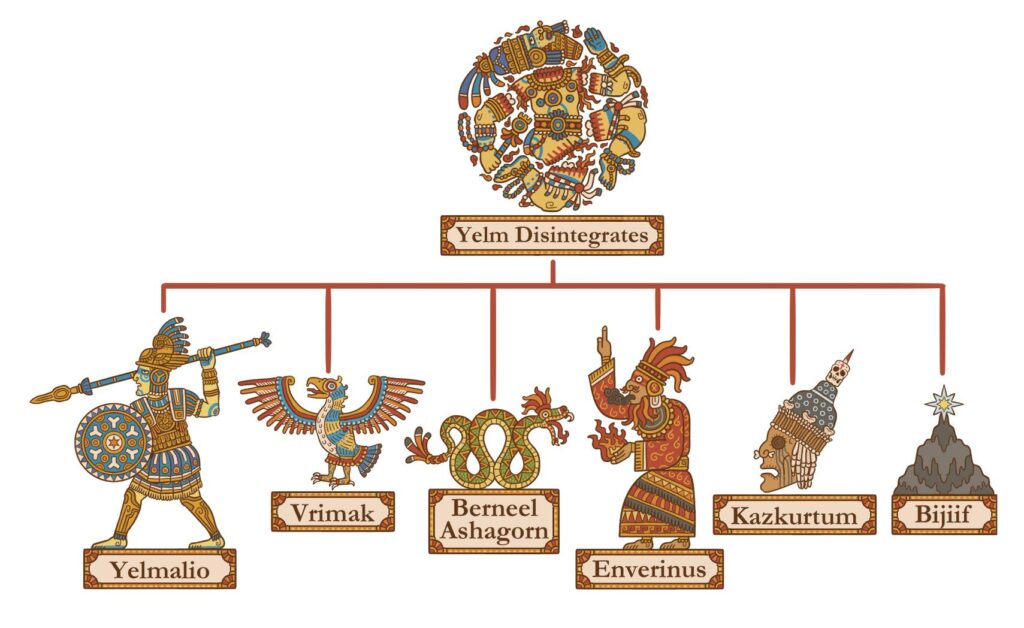
Several important solar deities are generally thought of as the children or lesser parts of Yelm, said to be created when Yelm was murdered by Orlanth. The God Learners called such entities “srvuali” – emanations of a Rune with a narrower definition but usually more approachable.
Probably the most important of these “parts of Yelm” cults is Yelmalio.
I never realized that Yelmalio was born out of Yelm’s slaying… huh. I guess it’s fine if he shows up before the Gods War though, after all there’s no time in the God Time, and one more version of Yelmalio can’t hurt, right?
The Cult of Odayla
Here’s a quick note on Odayla:
Odayla is a bear cult that is worshiped as a son of Orlanth. He’s usually found as a subcult of Orlanth in Dragon Pass but a few independent minor temples (I know of one on Jerra Hill) and shrines exist. But in Dragon Pass the independent cult is a rounding error.
In Sylila and the nearby provinces, Odayla is a bigger deal, with some 10,000 followers. In Sylila, his cult is comparable in size to Orlanth’s. He’s also found in Talastar, Anadiki, and Brolia.
At the end of the day his cult is that of a divine Bear God. His cult was more important in the First Age, when the King Bear cult was a big deal throughout the Pelorian Hill Country and even competed with the Heortling Orlanth cult for a while. But the Heortlings proved their Orlanth magic gave them mastery over the Bear God and now we have Orlanth Thunderous ruling the hill country instead of King Bear. Orlanth became a vehicle for magical exploration and quests, and his cult is broad and deep. Odayla in contrast is one of several Pelorian bear cults (although certainly the most numerous).
If you want more spells than Odayla gets from the core rulebook, David Scott has some advice for you, too:
The easiest way to give a cult new magic is through a local hero cult that gives one rune spell, that may even be unique.
So you could have Great Sky Hunter, that caught the Sky Bear and tore a medium air elemental from it, or even pillage names from older publications:
– Kudran Golden Feather gives Sureshot (single shrine is somewhere in northern Sartar)
– Mabar the fisher gives Draw Salmon (single shrine is somewhere in Aggar). Draw Salmon (beast) is a one point version of Draw Prey that only works on Salmon.
– Ranoo Longlegs gives Endurance (single shrine is somewhere in Sylila). Endurance (beast) (1pt stackable) allow the caster to move / jog / run for 6 hours, without tiring as long as they are tracking / chasing prey. Each extra point adds another 6 hours (incompatible with extension).
Game Balance Again
Jeff talks again about “game balance”, a concept he likes to refute almost as much as people like to complain about its absence in Glorantha and RuneQuest.
One thing that is sometimes hard for people who are used to systems with a lot “game balance” is that not all Gloranthan cults are equal in terms of importance, access to magic, or utility. Let’s quickly compare the cults of Orlanth and Yinkin.
Orlanth is a first tier cosmological entity, one of the Great Gods of Glorantha. He is the main Air God, the Thunderer, god of adventurers, tribes, and kings, who led the Lightbringers on their quest to Hell, and who contests with Yelm over rulership of Glorantha. He has more than a score of special Rune spells, more than a dozen major associated cults, and four major subcults. If you want your character to explore Glorantha’s magic broadly and deeply, there are few cults better to do that with.
Yinkin is a third tier cosmological entity, a minor god. He’s the god of shadowcats, a feline native to Dragon Pass that are long associated with the Orlanthi people. He has four special Rune spells, is associated with two major cults, and has no significant subcults (his cult is too small). He’s the god of cats, and just doesn’t provide a lot more than that. Heck, the only reason he has much of a cult at all is that he is Orlanth’s half-brother and accompanied Orlanth on many adventures – most people worship him as an associate of Orlanth.
However, BOTH cults can be equal fun to roleplay. Yinkin’s magic is limited and his power small, but it is fun to play the worshiper of a capricious and mercurial cat. And although Identify Scent is not as combat useful as say Thunderbolt or Lightning, it does have its uses!
I don’t care about “game balance” but I want to share the following anecdote from one of my groups, which was all composed of newbies, because I think it’s absolutely relevant.
A player wanted to play a “hunter” adventurer from the get go. I tried to help him navigate the trio of hunter deities (Odayla, Yinkin, Foundchild) but without much success: it’s hard to explain what the difference is in terms of gameplay without looking at each spell they provide, and it’s hard to explain what the difference is in terms of roleplay without explaining a lot of Glorantha up-front. So after failing to summarize some setting lore, I aborted my rant and boiled it down to “hey do you want to worship a bear god, a cat god, or a dog god?”. He picked the cat.
Then the player noticed that the spell list was shorter than, say, Orlanth’s (which another player had picked and was happily shouting cool spell names). The Yinkin player asked what that was about and I indeed explained that Yinkin was a minor god and a small cult, whereas Orlanth was the main guy. Now, it is NOT obvious to new players WHY major cults get more magic and minor cults get less. Getting more political and social power? Definitely. Getting more powerful spells? Probably, yeah? Getting more spells? Nope, some of my players just shrugged. They didn’t really have a problem with it, but they found it odd. I sort of explained it by saying that spells come from stories, and major gods have more stories about them.
Next the player asked what else does that mean to be in a minor cult. I ended up explaining various temple sizes and how Rune Point replenishing works. The player got worried about that. For instance, he was worried he would have to disrupt the party’s adventures to travel to far apart Yinkin shrines or risk going without magic for some sessions. He also worried about not always getting all his Rune Points back, compared to initiates of bigger cults who have access to bigger dedicated temples. I reassured him that with associate worship he would probably be OK, and I would tailor adventures to make his character work anyway.
All these player worries need to be addressed quickly and efficiently in order to prevent seeing a player bouncing off the system at character creation. And these concerns were not really about “game balance”, they were about gameplay expectations coming from cult choices.
The sad thing is that Jeff’s comments on this topic invariably explain gameplay mechanics by, basically, saying “because it’s like that in Glorantha”. It’s ironic to me that a designer who is known to criticize people who play RuneQuest as “sim-Glorantha” is also justifying game design choices as, well, “sim-Glorantha”. I’m sure we could put this topic to bed if Chaosium shared actual game design notes. There was a conscious choice at some point to model Glorantha that way, as opposed to another way. HeroQuest’s Glorantha and 13th Age’s Glorantha actually vary quite a lot in terms of magic level in that regard.
Anyway, here are some more of Jeff’s comments:
Not every cult is going to be equal or anywhere near equal. Deciding to join the cat god cult is a player decision, not a GM. But you do what you want to do.
[…] If you enjoy having a broad range of spells to choose from, there are cults for you. If you enjoy playing from a short list of spells, or really just want two or three and don’t really care about having more, then there are cults for you, But not every cult is going to have everything for everyone. And nor should it.
[…] And rules reflect that. There are plenty of cults in the core rules. Most are major cults. A few are minor or very specialised (Eiritha, Foundchild, Odaya, Black Fang, Oakfed, and Yinkin). It was important to me to include those as well.
Glasswork in Glorantha
What’s the status of glasswork in Glorantha?
As we know that the Lead Dwarfs developed glassblowing, and are capable of remarkable works of art. Humans have a nasty tendency to steal the secrets of the dwarfs, so glass is likely far more common in places like Sartar, Pavis, the Holy Country, and the Lunar Empire than it was in the ancient world.
Majority Cults
Here’s a note on cultures and areas in central Genertela in which a specific cult has a membership over 30% of the population. If we’re talking about 30% of the entire population (not just the population that can join cults in the first place… but also, say, kids), then 30% is huge: that’s almost half of all adults!
Either way, I don’t think you’ll find any surprises in Jeff’s list.
Colonization in Glorantha
This interesting note deals with various Gloranthan factions that are known to have created settlements and colonies in distant lands — just like many real-world societies did in the ancient world (most famously the Greeks). As far as I’m concerned, this gives me destination ideas for my game, in which the player’s tribe is thinking of sending them away on a few caravan runs.
Fillichet
Jeff posted this note about Fillichet, which he describes as “the gateway to the Lunar Empire”, if you’re headed there from Dragon Pass pass. There’s also a bunch of useful information if your players are planning a trip into Lunar provinces, such as city leadership and notable temples. In particular, I find it interesting that there are shrines to deities like Voria and Ty Kora Tek, which I haven’t heard much about around places like Sartar… probably because Filichet is bigger than any Sartarite city (15k people, compared to Boldhome’s 11k).
Community Roundup
The community roundup is our highlight of interesting things being mentioned in the Glorantha-related Facebook groups, sub-Reddits, and other similar online places.
Hercules as Harrek
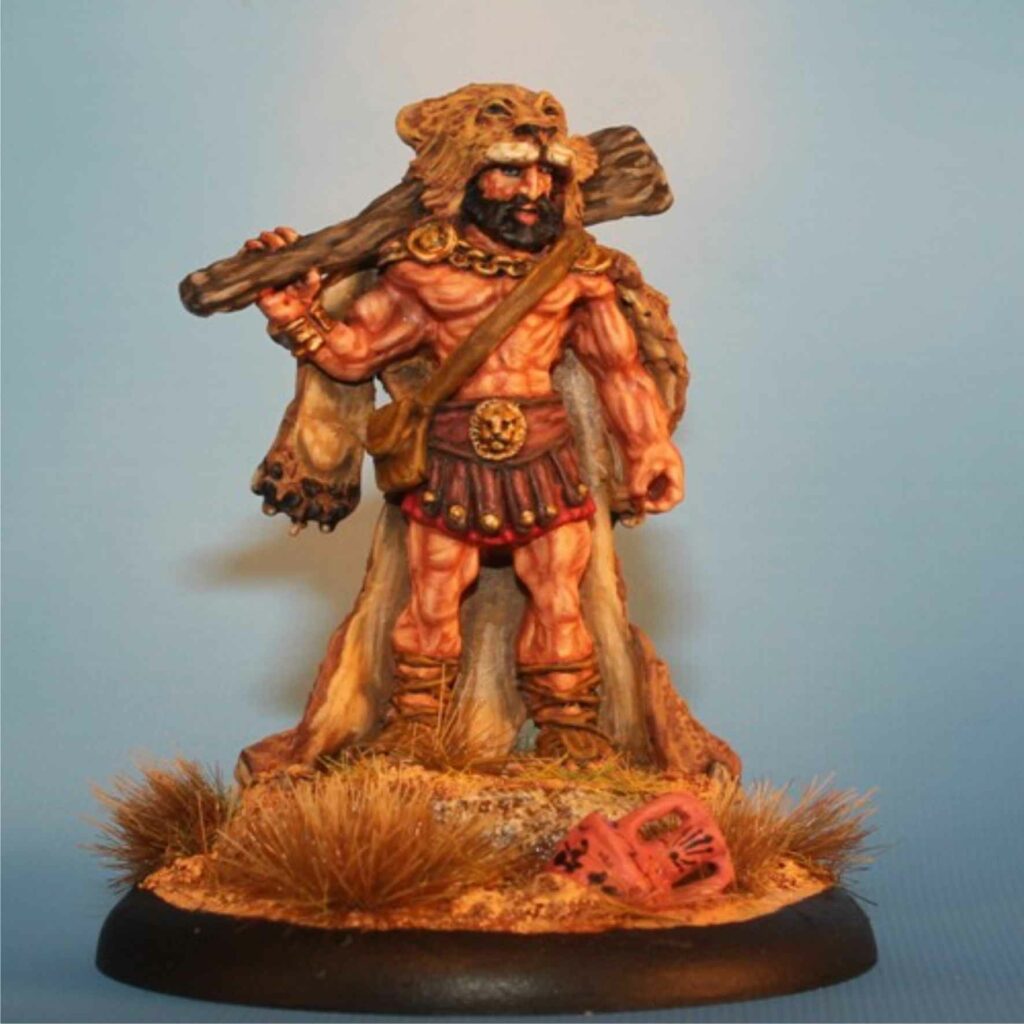
Fenris Games has a Hercules miniature that has a lion skin on his back… but you know what happens if you paint it white? Here it is, courtesy of Jim Mozley:
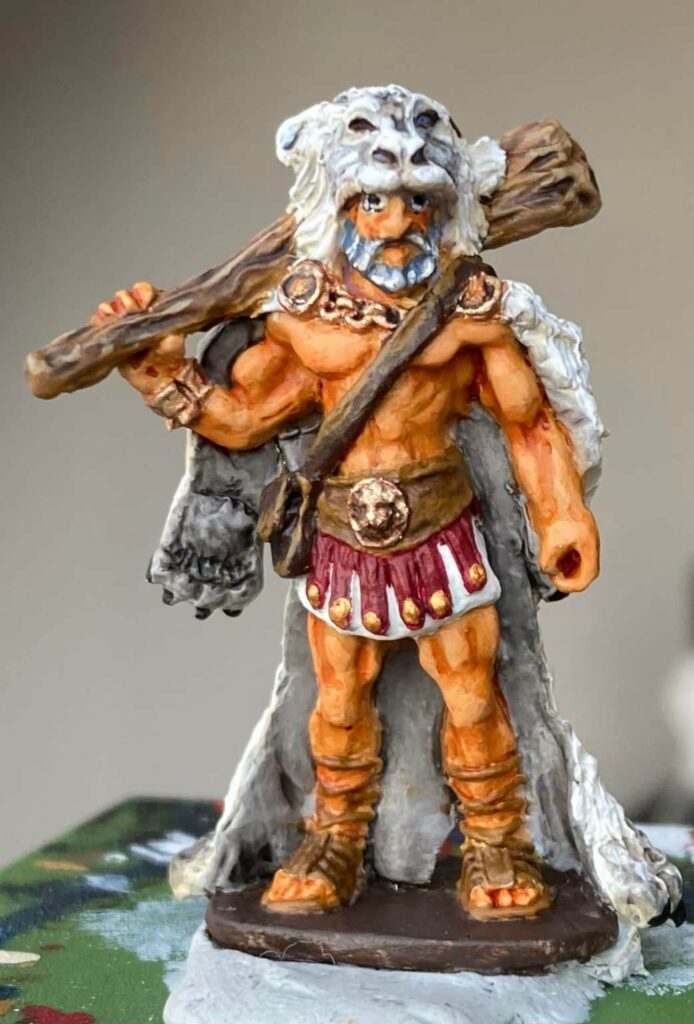
Bonus photo, still by Jim Mozley, a Moon Mask Assassin from Mad Knight:
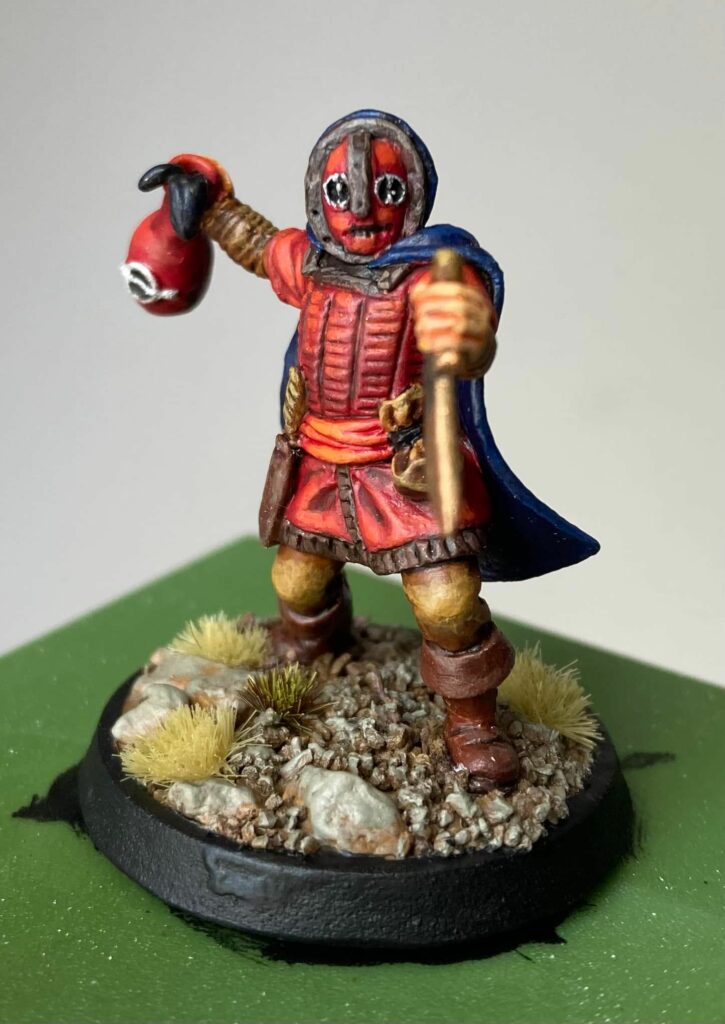
Various Other Miniatures
Paul Baker shared some newly painted miniatures:
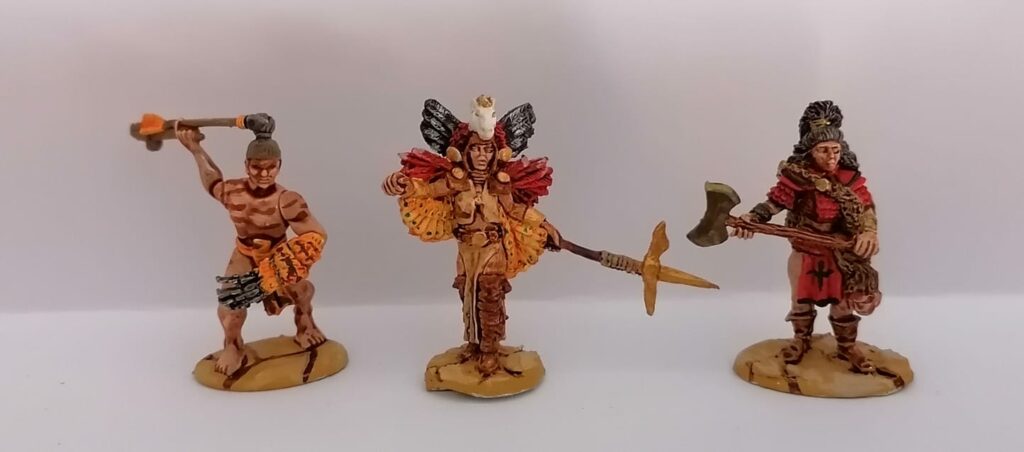
One tiger hsunchen (not really happy with it) plus a Feathered horse queen and Babeester Gor warrior. (Not sure of the weapon head sizes for either).. Just got to finish the mounted version of the horse queen.
And some Dragonewts:

Three devious dragonewts, quite happy with how they’ve turned out. Though the middle dragonewt ended up being right-handed by accident. Klanths courtesy of Atlantic Aztecs, cheers for the pointer Niamh.
NPCs by Lee O’Connor
Lee keep making these nice doodles!
Some more of these guys; Queen Samastina of Esrolia (complete with ‘Austin Powers’ style visual modesty props, because Bronze Age acccuraccy for lack of nudity taboo means I’m a creep in 2022), ol’ Dunorl Brandgorsson, Storm Voice of Clearwine and the female chief of the Ernaldori Clan in my game, who’s called Baranoste Estadottir. (Gloranthan scholars might notice some gender-bending there based on the ‘canon’, but she’s in charge of a matriarchal clan, so it would kinda follow that the leader would be female…)
Elsewhere on Arachne Solara’s Web
Not everything is about Glorantha, although most things are! Here are loosely relevant things that we found on the interwebs.
Native American Miniatures

The “Going Native: Rise of the City States” Kickstarter is crowdfunding miniatures of various Native American and Pacific people.
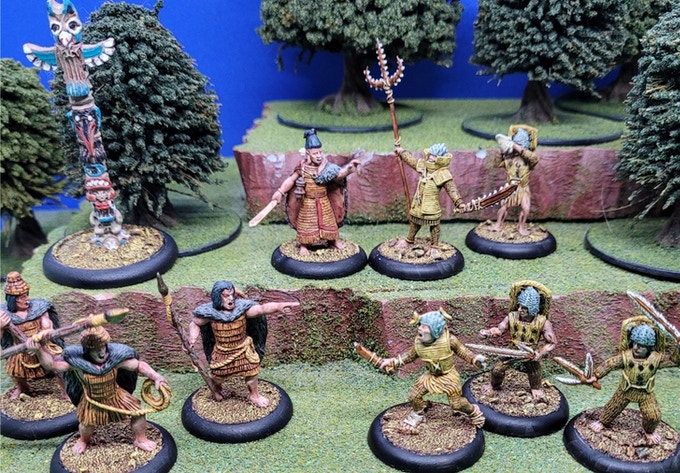
I can see a bunch of Praxian, East Isles, and even maybe Pamalterlan applications for these… and there are even tapirs in the lot! There are also very cool prototypes for priestesses, Mayan battalions, and even native fantasy monsters!

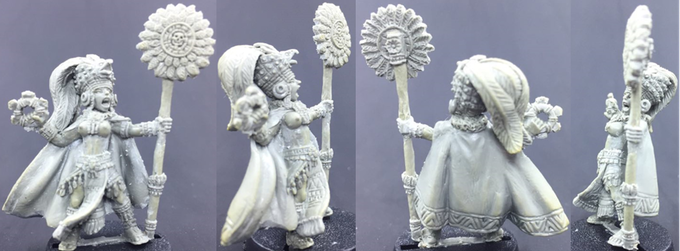
Newtling Idol

Thanks to Nicholas Pagnuccho for finding it! You can find other fun newtling idols by searching for “frog garden ornaments” online…
Sigiriya

Sigiriya, in Sri Lanka, is an ancient fortress that sits atop a roughly 180 meters high rock. It was built in the 5th century CE by King Kashyapa, with various lion motifs, including a monumental lion gate whose paws are all that remains:
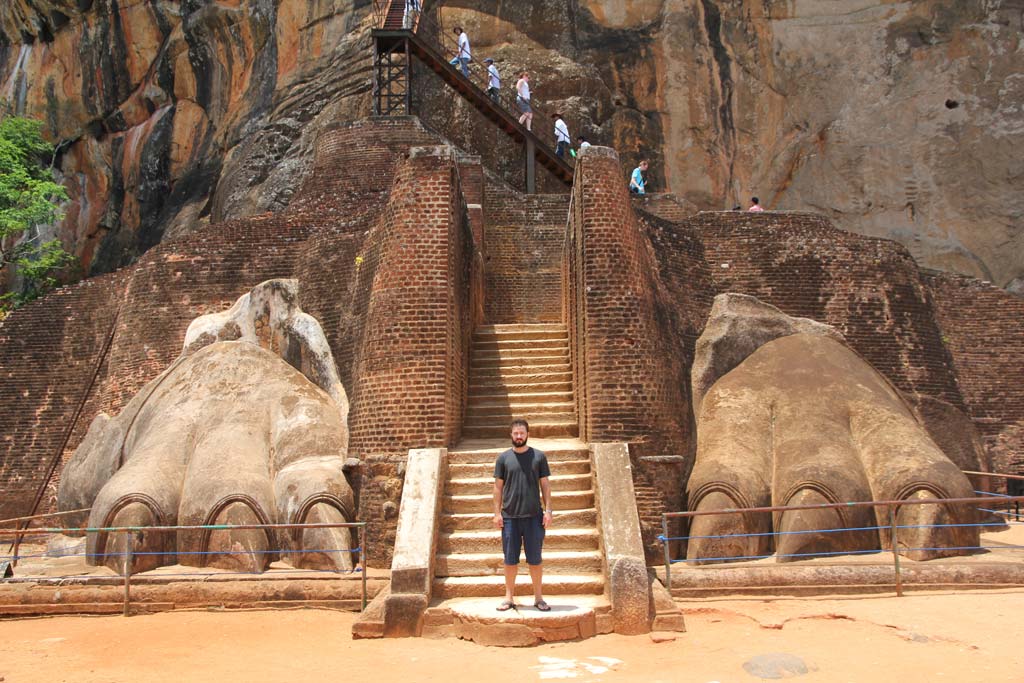
The palace included many frescoes, a “mirror wall”, and various gardens. Once again, Earth shows you that you can get really fancy with your Gloranthan settlements without having to use the excuse that it’s a fantasy world!
Orlanthi in a Nutshell
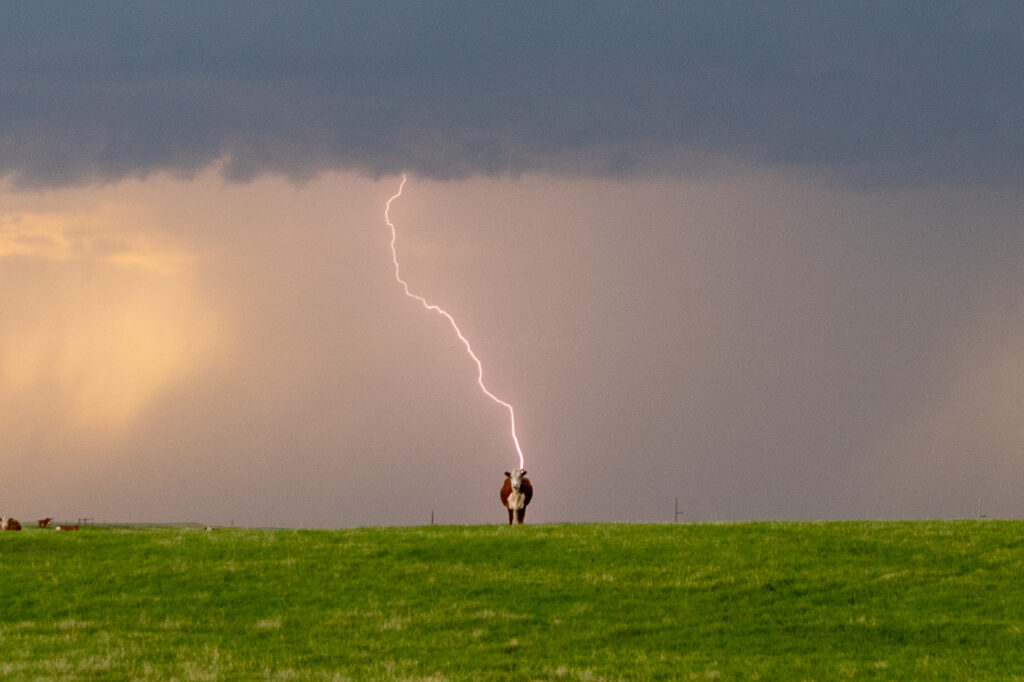
Looks like a good summary?
Storm Versus Fire
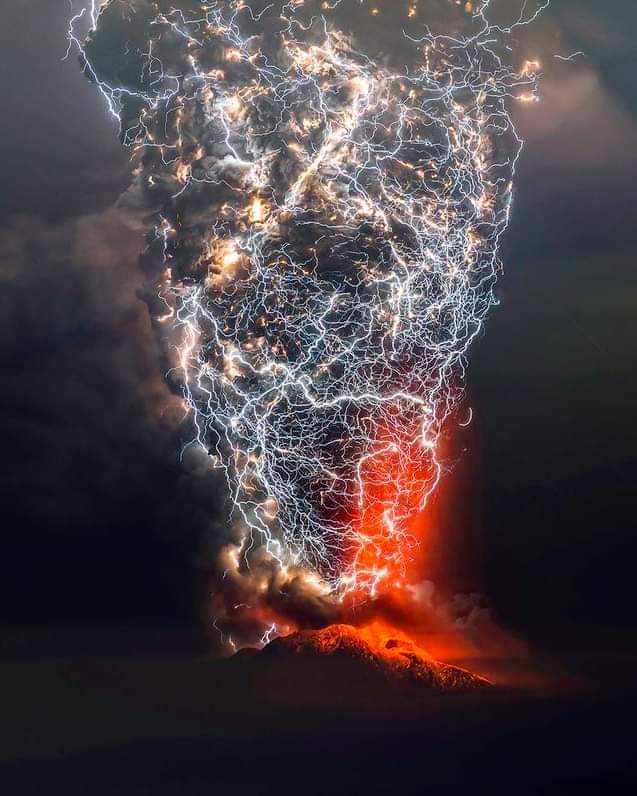
Storm and Fire, battling it over the Calbuco volcano (Chile, 2015).
Thank you for reading
That’s it for this week! Please contact us with any feedback, question, or news item we’ve missed!



